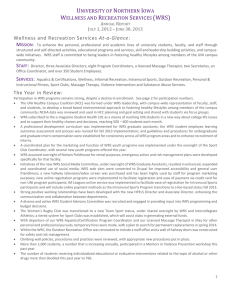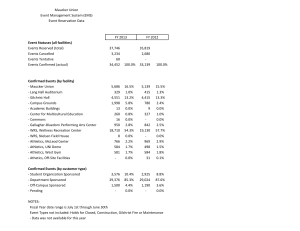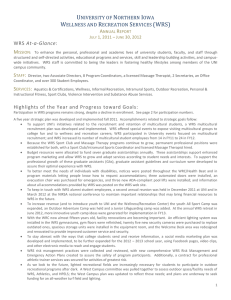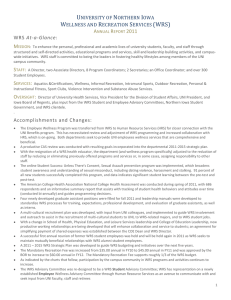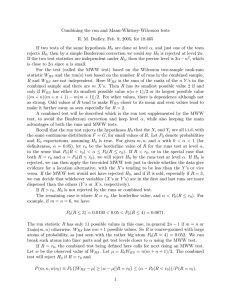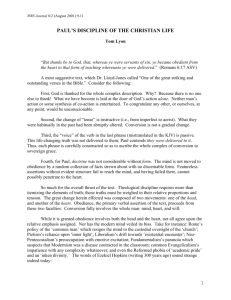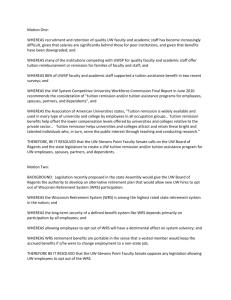U N I
advertisement
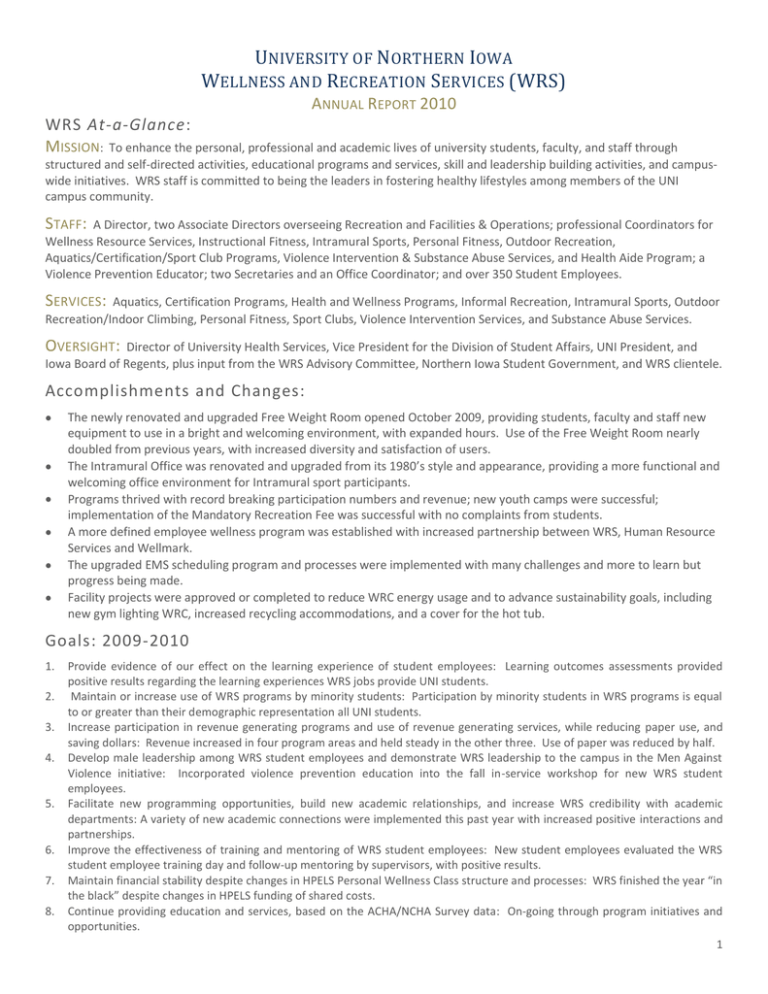
UNIVERSITY OF NORTHERN IOWA WELLNESS AND RECREATION SERVICES (WRS) ANNUAL REPORT 2010 WRS At-a-Glance: MISSION: To enhance the personal, professional and academic lives of university students, faculty, and staff through structured and self-directed activities, educational programs and services, skill and leadership building activities, and campuswide initiatives. WRS staff is committed to being the leaders in fostering healthy lifestyles among members of the UNI campus community. STAFF: A Director, two Associate Directors overseeing Recreation and Facilities & Operations; professional Coordinators for Wellness Resource Services, Instructional Fitness, Intramural Sports, Personal Fitness, Outdoor Recreation, Aquatics/Certification/Sport Club Programs, Violence Intervention & Substance Abuse Services, and Health Aide Program; a Violence Prevention Educator; two Secretaries and an Office Coordinator; and over 350 Student Employees. SERVICES: Aquatics, Certification Programs, Health and Wellness Programs, Informal Recreation, Intramural Sports, Outdoor Recreation/Indoor Climbing, Personal Fitness, Sport Clubs, Violence Intervention Services, and Substance Abuse Services. OVERSIGHT: Director of University Health Services, Vice President for the Division of Student Affairs, UNI President, and Iowa Board of Regents, plus input from the WRS Advisory Committee, Northern Iowa Student Government, and WRS clientele. Accomplishments and Changes: The newly renovated and upgraded Free Weight Room opened October 2009, providing students, faculty and staff new equipment to use in a bright and welcoming environment, with expanded hours. Use of the Free Weight Room nearly doubled from previous years, with increased diversity and satisfaction of users. The Intramural Office was renovated and upgraded from its 1980’s style and appearance, providing a more functional and welcoming office environment for Intramural sport participants. Programs thrived with record breaking participation numbers and revenue; new youth camps were successful; implementation of the Mandatory Recreation Fee was successful with no complaints from students. A more defined employee wellness program was established with increased partnership between WRS, Human Resource Services and Wellmark. The upgraded EMS scheduling program and processes were implemented with many challenges and more to learn but progress being made. Facility projects were approved or completed to reduce WRC energy usage and to advance sustainability goals, including new gym lighting WRC, increased recycling accommodations, and a cover for the hot tub. Goals: 2009-2010 1. 2. 3. 4. 5. 6. 7. 8. Provide evidence of our effect on the learning experience of student employees: Learning outcomes assessments provided positive results regarding the learning experiences WRS jobs provide UNI students. Maintain or increase use of WRS programs by minority students: Participation by minority students in WRS programs is equal to or greater than their demographic representation all UNI students. Increase participation in revenue generating programs and use of revenue generating services, while reducing paper use, and saving dollars: Revenue increased in four program areas and held steady in the other three. Use of paper was reduced by half. Develop male leadership among WRS student employees and demonstrate WRS leadership to the campus in the Men Against Violence initiative: Incorporated violence prevention education into the fall in-service workshop for new WRS student employees. Facilitate new programming opportunities, build new academic relationships, and increase WRS credibility with academic departments: A variety of new academic connections were implemented this past year with increased positive interactions and partnerships. Improve the effectiveness of training and mentoring of WRS student employees: New student employees evaluated the WRS student employee training day and follow-up mentoring by supervisors, with positive results. Maintain financial stability despite changes in HPELS Personal Wellness Class structure and processes: WRS finished the year “in the black” despite changes in HPELS funding of shared costs. Continue providing education and services, based on the ACHA/NCHA Survey data: On-going through program initiatives and opportunities. 1 WRC & Health Beat Total Visits 09-10 256,411 08-09 238,390 8,827 250 175 8,428 290 216 Intramural Sports Total Participations 09-10 27,561 08-09 26,739 Unique Students 3,229 3,105 09-10 168 101 22 458 08-09 161 89 52 427 Climbing Wall Usage (monthly average ) Academic year 1,523 Summer 273 1438 212 Unique Users Students Faculty/Staff Others Outdoor Recreation Sports Clubs 09-10 Number of Clubs Club Members 08-09 17 425 16 375 Trip participants Belay Clinic Participants Other Clinic Participants Rentals Fitness/Leisure Classes 09-10 08-09 Total Registered Fall Spring Summer Total 1,051 1,056 173 2,280 901 836 189 1,926 Personal Training Total Sessions 09-10 952 08-09 935 19 47 24 31 Unique Users Unique Students Fall Spring Summer 892 900 86 Unique Faculty/Staff/Other Fall Spring Summer 727 721 97 Students Faculty/Staff/Other WRS Facility Rentals 159 156 87 174 115 92 09-10 Gross Income Net Income 09-10 $77,311 $40,895 08-09 $58,846 not available 08-09 Learn-to-Swim Children of Students, Faculty Staff & Alumni 505 324 Students 379 488 Employees/Other 337 485 Red Cross Training Participants 613 565 Library Check Outs 201 233 Massages 2
